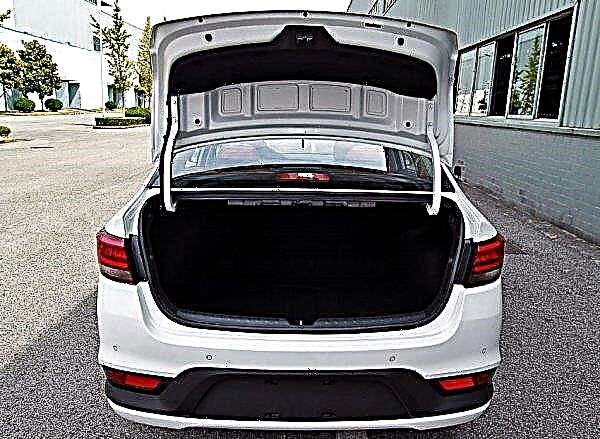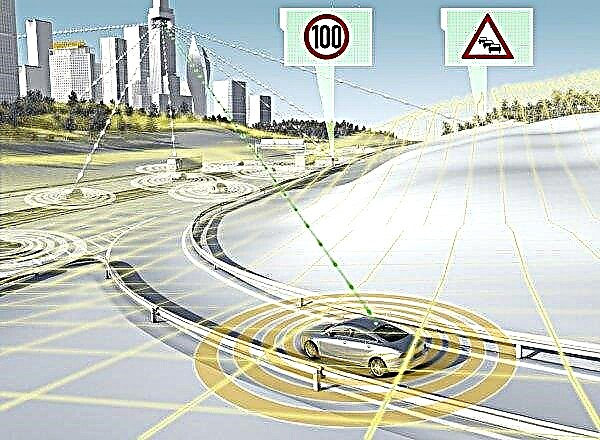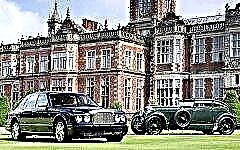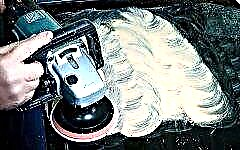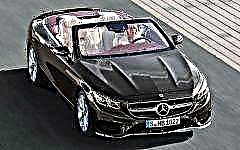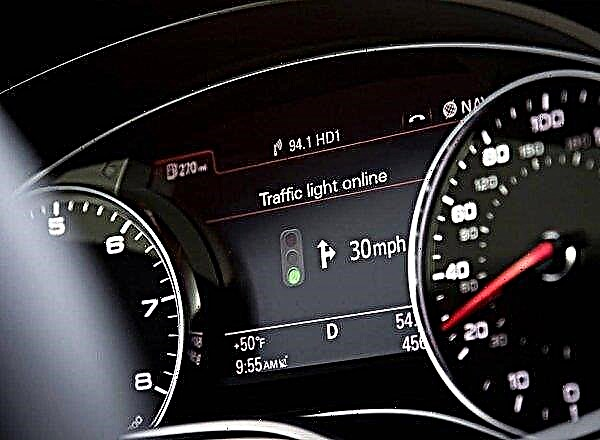Vehicle auxiliary systems will always be useful, as an example of frequent accidents due to inattention or ignorance of traffic signs. We will tell you how this system is arranged and works.

The content of the article:
- What is this system
- System components
- Principle of operation
Once in any metropolis, it is hard to imagine it without a large number of cars. As a result, there is a high probability of various accidents. There can be many reasons for such an accident, but most often it is speeding and inattention or ignorance of traffic signs.
What is a traffic sign recognition system

To make it easier for drivers on the road and to eliminate the option of not knowing the signs, engineers have developed a road sign recognition system. The main purpose of the system is to warn the driver about road signs of speed limits, crossing intersections or others.
Many car manufacturers have such systems in their arsenal, depending on the manufacturer, the systems are named differently. Most often, the system is called TSR (Traffic Sign Recognition). This name can be found in cars of the brands Audi, Ford, BMW, Volkswagen and Opel.
In Opel vehicles, the traffic sign recognition system is part of the Opel Eye system. This is one of the best integrated driver protection systems recognized in 2010. This set includes systems for pedestrian recognition, obstacle recognition, automatic parking and similar systems.

Mercedes-Benz has named its Speed Limit Assist system. In a car of this brand, it is known more as a speed limit control system. Volvo in its armament calls this system RSI - Road Sigh Information, information about road signs.
With progress, the names also change, the sign recognition system can be either an independent system or be part of a complex set of protection and warning systems.
What is the warning system

Depending on the make and model of the vehicle, the system may consist of different components. It is also possible to use components of another system, for example, sensors, scanners and cameras. But as a rule, a traffic sign recognition system consists of components:
- Control block;
- a place (often a display) for displaying processed information.
It is this location of the camera, at the level of the driver's head, that allows the most accurate and quick recognition of a road sign and its presence on the road. The camera itself is made according to the latest technology, high-quality optics and a good image obtained, give more chances for high-quality recognition of the sign. Two generations of warning systems can be distinguished. The first only informs the driver by displaying a small part of the information about the sign. The second generation is already much more complicated, especially if the car has a central display, the sign itself, information about the sign and what you violated will be displayed on it.
The first generation is able to recognize signs:
- Speed Limit;
- overtaking ban;
- some additional information signs.
The second generation is able to recognize, in addition to the above signs, also:
- movement without stopping is prohibited;
- living sector;
- beginning / end of the settlement;
- end of the zone of all restrictions;
- No entry;
- the advantage of the oncoming / before the oncoming vehicle.
This is not yet a complete list of characters that the second generation is able to recognize. This system uses a reasonable control unit based on the operating system, and as new characters appear to be recognized, the system will be updated. The latest innovation is the use of GPS instead of vehicle data such as speed, direction, and other data that can be replaced by GPS.
Sign recognition principle

So all the same, how the system is arranged and the principle of its operation. As already mentioned, the camera on the windshield is the first thing the system starts with. The camera shoots the path in front of the car, as a rule, this area is on the side of the front passenger (depending on the direction of travel) and above the driver. The same camera can be used by a pedestrian detection system, or lane departure assistance.
After the received image, the information is transmitted to the control unit. In the first generation, the control unit is simple and compares the received data with the existing characters in the database, but if the character is recognized, the information is displayed to the driver, otherwise no action will take place.
The second generation of the system is much more complicated. The system not only sorts out the received data, but also corrects the sign in the image from the camera and selects different combinations of possible options. This suggests that there is a better chance of recognizing a damaged or poorly visible sign. Also, in the second generation, the operating system of the control unit superimposes the received information on the GPS navigation maps and draws signs so that the driver can not only hear, but also see possible obstacles.

It is worth considering that the system is able to remember the action of several signs. After all, it often happens that one sign has not yet finished the zone of action, and the second has also appointed its own rules.
A warning can be displayed both on the instrument panel display and on a separate central display along with navigation maps. For example, the system will compare what speed is the maximum permissible and how much km / h you have exceeded, or it will start informing you if you went to the entry prohibited sign.
Rumor has it that the third generation will use the traffic rules by signs and, in the event of a gross violation, give the driver advice on how to avoid the violation and how to do it right. After all, it often happens that novice drivers without practice simply violate the simplest rules for signs.




